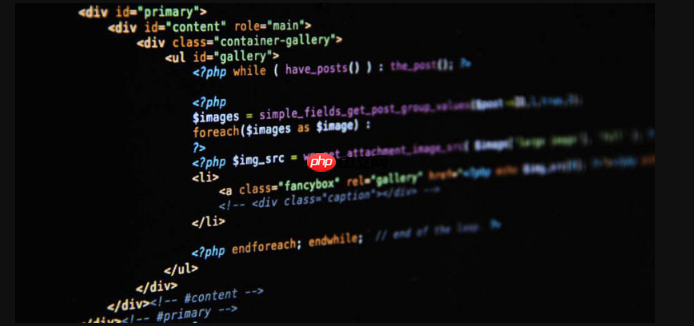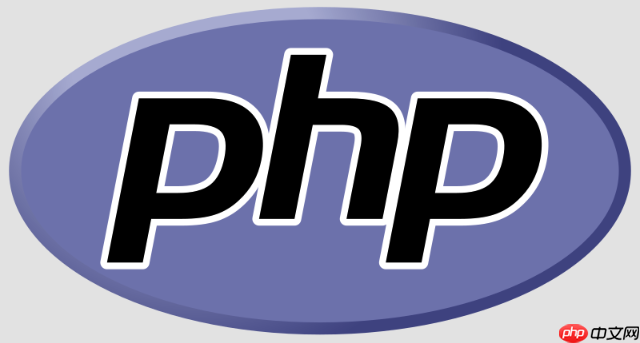 Backend Development
Backend Development
 PHP Tutorial
PHP Tutorial
 PHP realizes monetization of member management system PHP membership level and rights design skills
PHP realizes monetization of member management system PHP membership level and rights design skills
PHP realizes monetization of member management system PHP membership level and rights design skills
Jul 25, 2025 pm 06:18 PMThe core is that the database design is clear, including table structures such as users, membership_levels, membership_benefits; 2. The payment process relies on PHP to connect to gateways such as Stripe/Alipay and handle callback update status; 3. Use middleware to check membership levels to determine resource access; 4. Subscription management requires maintenance of subscriptions table timing task processing renewal/downgrade; 5. PHP has become an ideal choice for monetization systems due to its fast development, low cost and strong ecology; 6. Membership levels should be divided into three layers: free/basic/high-end, and equity should be anchored to value and scarcity; 7. Enhanced monetization also requires behavior tracking, personalized recommendation, security and cheating, and open API interfaces. The system achieves continuous monetization through solid technology implementation of business models.

The core of building a PHP member management system that can continuously monetize is two: one is the steady support of back-end technology, especially PHP's ability to handle users, payments and permissions; the other is the exquisite design of membership levels and rights, which directly determines whether users are willing to pay and how much they pay. To put it bluntly, it means thinking through the technology and business model and then implementing it solidly with code.

Solution
To implement a monetizable PHP membership management system, we have to start from several key points. First of all, database design is the cornerstone, which must be able to clearly store users, membership levels, corresponding rights, subscription records, and even payment flows. I usually design a users table that contains the membership_level_id field, which is associated with the membership_levels table, which defines names, prices, periods, etc. of different levels. At the same time, the membership_benefits table lists the specific rights and interests enjoyed by each level in detail, such as accessing specific content, downloading resources, priority customer service, etc., and is associated with membership_levels through many-to-many relationships.
Next is the payment process. PHP plays a core role here, and it is responsible for interacting with third-party payment gateways (such as Stripe, PayPal, or domestic Alipay and WeChat Payment SDKs). This usually involves generating an order, jumping to the payment page, receiving payment callback notifications, and updating the user's membership status based on the callback results. I personally prefer to use mature PHP payment library or the payment modules that come with the framework. They often encapsulate API calls and signature verification, which can greatly reduce the development workload and the probability of errors.

Then there is permission control. This is a key part of monetization of membership systems, ensuring that only paid users can access advanced content. In PHP applications, this can be achieved through middleware (such as Middleware in Laravel) or AOP (System-oriented programming). Each time a user requests a restricted resource, the system checks whether its membership_level_id meets the access requirements. For example, a route for advanced videos may require an auth.premium middleware that will determine the level of the current user.
Finally, don't forget to subscribe to management. For members who pay monthly or annually, automatic renewal, unsubscribe, upgrade/downgrade functions are required. This usually requires combining the subscription service of the payment gateway and maintaining a subscriptions table on our PHP backend that records the user's subscription cycle, status, and next deduction date. A Cron Job is particularly important at this time, which can regularly check for upcoming subscriptions, trigger renewal notifications or actual deductions.

Why is PHP an ideal choice for building a membership system with high monetization potential?
To be honest, when I started working on a project, I also struggled with what language I used. But PHP has obvious advantages in this matter of membership system. Think about it, its ecosystem is extremely mature. Frameworks like Laravel and Symfony have encapsulated many underlying things, and their development efficiency is ridiculously high. I remember one time I took on an urgent task and asked to launch a website with membership functions within two weeks. At that time, I relied on Laravel's Cashier (integrated Stripe) and its own certification system and was forced to get out. This ability to develop rapidly is a life-saving straw for projects that want to verify business models and seize the market as soon as possible.
Moreover, the deployment cost of PHP is relatively low, and most virtual hosts or cloud servers support PHP very well, which is a big temptation for start-ups or individual developers with limited budgets. You don't have to worry and effort to make complex server configurations just to run an application. Furthermore, the PHP community is huge. When encountering problems, you can search for a lot of solutions. Many ready-made libraries and components can be used, which invisibly lowers the threshold for development and maintenance. Therefore, from the perspective of rapid monetization and cost control, PHP is indeed a very "favorite" choice. It allows you to focus more on business logic and user experience, rather than in the quagmire of underlying technology.
How to design an attractive membership level system to maximize users' willingness to pay?
Designing a membership level is not something you can decide just by slapping your head, there are many tricks inside. My personal experience is, don’t think about different levels from the beginning, first think about who your core users are and what they value the most. For example, if your content is knowledgeable, then membership rights may be exclusive reports, in-depth courses, and expert Q&A; if it is a tool product, it may be advanced features, larger storage space, and faster processing speed.
I usually recommend starting from the three layers of "free-basic payment-premium payment". The free layer is a traffic diversion that allows users to taste the sweetness, but also leaves regrets, such as only reading the beginning of the article, or using basic functions. The basic payment layer is the core source of income, providing core values that users generally need and are willing to pay for. The premium payment layer is prepared for users who pursue the ultimate experience and are not sensitive to price, and provides unique and exclusive services, such as one-on-one consultation, customized services, offline event invitations, etc.
The key lies in "value anchoring" and "scarcity". The rights and interests of each level must make users feel that they are worth the money, and they are not available to the previous level. For example, I did a case where senior members can watch new content one week in advance, which is very attractive in the field of knowledge payment. Also, some "soft" rights can be added, such as exclusive community, member medals, and birthday privileges. Although these are not directly "functions", they can enhance the user's sense of belonging and dignity. Pricing strategies are also very important. You can try psychological pricing (such as 99 yuan instead of 100 yuan), or provide annual payment discounts to encourage users to subscribe for a long time. The most important thing is to clearly display the rights and interests comparison of each level so that users can see the value of payment at a glance.
In addition to level division, what other PHP technical points can enhance the monetization capabilities of member systems?
It is not enough to have a membership level alone. To make the system truly "make money", you have to put more effort into the technical level. In addition to the payment and permissions mentioned above, I think there are several points that are particularly worth investing in:
The first is data analysis and user behavior tracking . The PHP backend can record every action a user has on the website: what content he has read, which button he clicked, how long he stayed on which page, and what he put in the shopping cart and gave up. These data are gold mines! Through analysis, you can know which member level is the most popular, which rights and interests are the most capable of promoting conversion, and where users are lost. We can use PHP to write this data to a log file, or directly store it into the database, and then visually analyze it with some BI tools. With these insights, you can adjust pricing, optimize equity, and even develop new features more accurately.
The second is personalized recommendation and marketing automation . Based on user behavior data, the PHP backend can implement a simple personalized recommendation algorithm. For example, if a free user often browses advanced content on a certain topic, the system can automatically push paid membership rights advertisements for that topic, or send customized emails. This can be triggered regularly through PHP scripts, combined with email marketing API or in-site communication systems. This kind of marketing method that is "thousands of people and faces" is much better than the flood-style advertising.
Next is security and anti-cheating mechanism . Once the membership system involves monetization, it becomes the target of the attacker. PHP has rich practical experience in security, such as ensuring that all payment callbacks are strictly signed and verified to prevent forgery; filtering and escaping user input to prevent SQL injection and XSS attacks; and encrypting and storing sensitive data (such as payment credentials). In addition, there must be technical means to prevent member account sharing and content link theft, such as limiting the number of concurrent login devices on the same account, or DRM encryption of video streams. Although these technical details do not directly bring income, they are the "behind the scenes" who ensure the stable operation of the system and protect commercial interests.
Finally, don't forget the openness of the API interface . A good membership system should be able to easily integrate with other systems, such as CRM system, customer service system, data visualization platform, etc. By providing a clear and secure API interface, the PHP system can seamlessly connect with other services, forming a stronger ecosystem, further improving the value and operational efficiency of member services.
The above is the detailed content of PHP realizes monetization of member management system PHP membership level and rights design skills. For more information, please follow other related articles on the PHP Chinese website!

Hot AI Tools

Undress AI Tool
Undress images for free

Undresser.AI Undress
AI-powered app for creating realistic nude photos

AI Clothes Remover
Online AI tool for removing clothes from photos.

Clothoff.io
AI clothes remover

Video Face Swap
Swap faces in any video effortlessly with our completely free AI face swap tool!

Hot Article

Hot Tools

Notepad++7.3.1
Easy-to-use and free code editor

SublimeText3 Chinese version
Chinese version, very easy to use

Zend Studio 13.0.1
Powerful PHP integrated development environment

Dreamweaver CS6
Visual web development tools

SublimeText3 Mac version
God-level code editing software (SublimeText3)

Hot Topics
 Ethereum ETH latest price APP ETH latest price trend chart analysis software
Jul 31, 2025 pm 10:27 PM
Ethereum ETH latest price APP ETH latest price trend chart analysis software
Jul 31, 2025 pm 10:27 PM
1. Download and install the application through the official recommended channel to ensure safety; 2. Access the designated download address to complete the file acquisition; 3. Ignore the device safety reminder and complete the installation as prompts; 4. You can refer to the data of mainstream platforms such as Huobi HTX and Ouyi OK for market comparison; the APP provides real-time market tracking, professional charting tools, price warning and market information aggregation functions; when analyzing trends, long-term trend judgment, technical indicator application, trading volume changes and fundamental information; when choosing software, you should pay attention to data authority, interface friendliness and comprehensive functions to improve analysis efficiency and decision-making accuracy.
 BTC digital currency account registration tutorial: Complete account opening in three steps
Jul 31, 2025 pm 10:42 PM
BTC digital currency account registration tutorial: Complete account opening in three steps
Jul 31, 2025 pm 10:42 PM
First, select well-known platforms such as Binance Binance or Ouyi OKX, and prepare your email and mobile phone number; 1. Visit the official website of the platform and click to register, enter your email or mobile phone number and set a high-strength password; 2. Submit information after agreeing to the terms of service, and complete account activation through the email or mobile phone verification code; 3. After logging in, complete identity authentication (KYC), enable secondary verification (2FA), and regularly check security settings to ensure account security. After completing the above steps, you can successfully create a BTC digital currency account.
 What are the websites for real-time price query of Bitcoin? Recommended websites that can view Bitcoin K-line and depth chart
Jul 31, 2025 pm 10:54 PM
What are the websites for real-time price query of Bitcoin? Recommended websites that can view Bitcoin K-line and depth chart
Jul 31, 2025 pm 10:54 PM
In the digital currency market, real-time mastering of Bitcoin prices and transaction in-depth information is a must-have skill for every investor. Viewing accurate K-line charts and depth charts can help judge the power of buying and selling, capture market changes, and improve the scientific nature of investment decisions.
 VSCode settings.json location
Aug 01, 2025 am 06:12 AM
VSCode settings.json location
Aug 01, 2025 am 06:12 AM
The settings.json file is located in the user-level or workspace-level path and is used to customize VSCode settings. 1. User-level path: Windows is C:\Users\\AppData\Roaming\Code\User\settings.json, macOS is /Users//Library/ApplicationSupport/Code/User/settings.json, Linux is /home//.config/Code/User/settings.json; 2. Workspace-level path: .vscode/settings in the project root directory
 btc trading platform latest version app download 5.0.5 btc trading platform official website APP download link
Aug 01, 2025 pm 11:30 PM
btc trading platform latest version app download 5.0.5 btc trading platform official website APP download link
Aug 01, 2025 pm 11:30 PM
1. First, ensure that the device network is stable and has sufficient storage space; 2. Download it through the official download address [adid]fbd7939d674997cdb4692d34de8633c4[/adid]; 3. Complete the installation according to the device prompts, and the official channel is safe and reliable; 4. After the installation is completed, you can experience professional trading services comparable to HTX and Ouyi platforms; the new version 5.0.5 feature highlights include: 1. Optimize the user interface, and the operation is more intuitive and convenient; 2. Improve transaction performance and reduce delays and slippages; 3. Enhance security protection and adopt advanced encryption technology; 4. Add a variety of new technical analysis chart tools; pay attention to: 1. Properly keep the account password to avoid logging in on public devices; 2.
 Stablecoin purchasing channel broad spot
Jul 31, 2025 pm 10:30 PM
Stablecoin purchasing channel broad spot
Jul 31, 2025 pm 10:30 PM
Binance provides bank transfers, credit cards, P2P and other methods to purchase USDT, USDC and other stablecoins, with fiat currency entrance and high security; 2. Ouyi OKX supports credit cards, bank cards and third-party payment to purchase stablecoins, and provides OTC and P2P transaction services; 3. Sesame Open Gate.io can purchase stablecoins through fiat currency channels and P2P transactions, supporting multiple fiat currency recharges and convenient operation; 4. Huobi provides fiat currency trading area and P2P market to purchase stablecoins, with strict risk control and high-quality customer service; 5. KuCoin supports credit cards and bank transfers to purchase stablecoins, with diverse P2P transactions and friendly interfaces; 6. Kraken supports ACH, SEPA and other bank transfer methods to purchase stablecoins, with high security
 USDT virtual currency purchase process USDT transaction detailed complete guide
Aug 01, 2025 pm 11:33 PM
USDT virtual currency purchase process USDT transaction detailed complete guide
Aug 01, 2025 pm 11:33 PM
First, choose a reputable trading platform such as Binance, Ouyi, Huobi or Damen Exchange; 1. Register an account and set a strong password; 2. Complete identity verification (KYC) and submit real documents; 3. Select the appropriate merchant to purchase USDT and complete payment through C2C transactions; 4. Enable two-factor identity verification, set a capital password and regularly check account activities to ensure security. The entire process needs to be operated on the official platform to prevent phishing, and finally complete the purchase and security management of USDT.
 USDT virtual currency account activation guide USDT digital asset registration tutorial
Aug 01, 2025 pm 11:36 PM
USDT virtual currency account activation guide USDT digital asset registration tutorial
Aug 01, 2025 pm 11:36 PM
First, choose a reputable digital asset platform. 1. Recommend mainstream platforms such as Binance, Ouyi, Huobi, Damen Exchange; 2. Visit the official website and click "Register", use your email or mobile phone number and set a high-strength password; 3. Complete email or mobile phone verification code verification; 4. After logging in, perform identity verification (KYC), submit identity proof documents and complete facial recognition; 5. Enable two-factor identity verification (2FA), set an independent fund password, and regularly check the login record to ensure the security of the account, and finally successfully open and manage the USDT virtual currency account.





